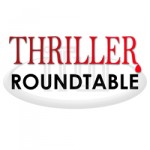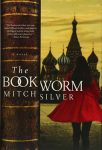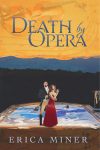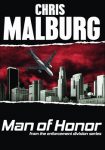

May 21 – 27: “First person or third person or something else?”
 First person or third person or something else? This week ITW Members Erica Miner, Chris Malburg, Sanjida Kay, Judy Penz Sheluk, Mitch Silver, Patricia Rosemoor, Jon Land, Martin Roy Hill, Dave Zeltserman, Paul D. Marks and R.G. Belsky will discuss how they decide. Scroll down to the comments section to learn more!
First person or third person or something else? This week ITW Members Erica Miner, Chris Malburg, Sanjida Kay, Judy Penz Sheluk, Mitch Silver, Patricia Rosemoor, Jon Land, Martin Roy Hill, Dave Zeltserman, Paul D. Marks and R.G. Belsky will discuss how they decide. Scroll down to the comments section to learn more!
 Judy Penz Sheluk is the author of two mystery series: The Glass Dolphin Mysteries (THE HANGED MAN’S NOOSE and A HOLE IN ONE) and The Marketville Mysteries (SKELETONS IN THE ATTIC). Her short crime fiction appears is several collections. In addition to ITW, Judy is member of Sisters in Crime, the Short Mystery Fiction Society, and Crime Writers of Canada, where she serves on the Board of Directors as the Regional Representative for Toronto/Southern Ontario.
Judy Penz Sheluk is the author of two mystery series: The Glass Dolphin Mysteries (THE HANGED MAN’S NOOSE and A HOLE IN ONE) and The Marketville Mysteries (SKELETONS IN THE ATTIC). Her short crime fiction appears is several collections. In addition to ITW, Judy is member of Sisters in Crime, the Short Mystery Fiction Society, and Crime Writers of Canada, where she serves on the Board of Directors as the Regional Representative for Toronto/Southern Ontario.
 Mitch Silver was born in Brooklyn and grew up on Long Island. He attended Yale (B.A. in History) and Harvard Law School (“I lasted three days. I know the law through Wednesday, but after that…”). He was an advertising writer for several of the big New York agencies, living in Paris for a year with his wife, Ellen Highsmith Silver, while he was European Creative Director on the Colgate-Palmolive account. A previously published novelist (In Secret Service —S&S/Touchstone), Mitch and his wife Ellen live in Greenwich, Connecticut and have two children: Sloane is a nurse at Wake Forest Medical Center and Perry is an actor and the drummer for Sky Pony, a band in New York. Mitch also won the American Song Festival Lyric Grand Prize for “Sleeping Single in a Double Bed.” His blood type is O positive.
Mitch Silver was born in Brooklyn and grew up on Long Island. He attended Yale (B.A. in History) and Harvard Law School (“I lasted three days. I know the law through Wednesday, but after that…”). He was an advertising writer for several of the big New York agencies, living in Paris for a year with his wife, Ellen Highsmith Silver, while he was European Creative Director on the Colgate-Palmolive account. A previously published novelist (In Secret Service —S&S/Touchstone), Mitch and his wife Ellen live in Greenwich, Connecticut and have two children: Sloane is a nurse at Wake Forest Medical Center and Perry is an actor and the drummer for Sky Pony, a band in New York. Mitch also won the American Song Festival Lyric Grand Prize for “Sleeping Single in a Double Bed.” His blood type is O positive.
 Former Metropolitan Opera violinist Erica Miner is now an award-winning author, screenwriter, journalist and lecturer. Her journal-based debut novel, Travels With My Lovers, won the Fiction Prize in the Direct from the Author Book Awards. Her screenplays have won awards in recognized competitions. Erica’s Met Opera-based thriller Murder In The Pit won raves. Her just-released sequel to Murder In The Pit, Death by Opera, takes place at Santa Fe Opera.
Former Metropolitan Opera violinist Erica Miner is now an award-winning author, screenwriter, journalist and lecturer. Her journal-based debut novel, Travels With My Lovers, won the Fiction Prize in the Direct from the Author Book Awards. Her screenplays have won awards in recognized competitions. Erica’s Met Opera-based thriller Murder In The Pit won raves. Her just-released sequel to Murder In The Pit, Death by Opera, takes place at Santa Fe Opera.
 Paul D. Marks has written three novels, co-edited two anthologies and written countless short stories. He’s won a Shamus Award, was voted #1 in Ellery Queen Mystery Magazine’s 2016 Reader’s Choice Award and been nominated for Anthony and Macavity Awards. His story “Windward” was chosen for The Best American Mysteries of 2018. His short fiction has been published in Ellery Queen Mystery Magazine, Akashic’s Noir series (St. Louis), Alfred Hitchcock Mystery Magazine, Crimestalker Casebook, Hardluck Stories, Hardboiled, and many others.
Paul D. Marks has written three novels, co-edited two anthologies and written countless short stories. He’s won a Shamus Award, was voted #1 in Ellery Queen Mystery Magazine’s 2016 Reader’s Choice Award and been nominated for Anthony and Macavity Awards. His story “Windward” was chosen for The Best American Mysteries of 2018. His short fiction has been published in Ellery Queen Mystery Magazine, Akashic’s Noir series (St. Louis), Alfred Hitchcock Mystery Magazine, Crimestalker Casebook, Hardluck Stories, Hardboiled, and many others.
 Sanjida Kay is the author of three psychological thrillers, Bone by Bone, The Stolen Child and My Mother’s Secret, published by Corvus Books. Bone by Bone was long listed for the CWA Steel Dagger Award, nominated as one of the best crime and thriller books of 2016 by The Guardian newspaper. Her thrillers are available on Audible as audiobooks. Sanjida lives in Bristol, England, with her husband and her daughter
Sanjida Kay is the author of three psychological thrillers, Bone by Bone, The Stolen Child and My Mother’s Secret, published by Corvus Books. Bone by Bone was long listed for the CWA Steel Dagger Award, nominated as one of the best crime and thriller books of 2016 by The Guardian newspaper. Her thrillers are available on Audible as audiobooks. Sanjida lives in Bristol, England, with her husband and her daughter
 Chris Malburg is a widely published author, with over 4 million words published in 22 popular business books and four novels. Simon & Schuster, Putnam, Wiley and McGraw Hill all publish Chris’ work, which is consumed in most western countries. After classes at Stanford Writers School, Chris began the fun side of his career. He has crossed the chasm into fiction with the fourth installment in his Enforcement Division series. Chris is known for his meticulous research of the material presented in his books. MAN OF HONOR is an example. While preparing this book, Chris took the same aircraft accident investigation courses at USC’s Viterbi School of Engineering that the NTSB and FAA accident investigators take.
Chris Malburg is a widely published author, with over 4 million words published in 22 popular business books and four novels. Simon & Schuster, Putnam, Wiley and McGraw Hill all publish Chris’ work, which is consumed in most western countries. After classes at Stanford Writers School, Chris began the fun side of his career. He has crossed the chasm into fiction with the fourth installment in his Enforcement Division series. Chris is known for his meticulous research of the material presented in his books. MAN OF HONOR is an example. While preparing this book, Chris took the same aircraft accident investigation courses at USC’s Viterbi School of Engineering that the NTSB and FAA accident investigators take.
 Dave Zeltserman’s crime and horror thrillers have been picked by NPR, the Washington Post, American Library Association, Booklist, and WBUR as best novels of the year, and his short mystery fiction has won a Shamus, Derringer and two Ellery Queen Readers Choice awards. His Morris Brick thrillers written as Jacob Stone include DERANGED, CRAZED, MALICIOUS, TWISTED. His novel SMALL CRIMES has been made into a Netflix film starring Nikolaj Coster-Waldau.
Dave Zeltserman’s crime and horror thrillers have been picked by NPR, the Washington Post, American Library Association, Booklist, and WBUR as best novels of the year, and his short mystery fiction has won a Shamus, Derringer and two Ellery Queen Readers Choice awards. His Morris Brick thrillers written as Jacob Stone include DERANGED, CRAZED, MALICIOUS, TWISTED. His novel SMALL CRIMES has been made into a Netflix film starring Nikolaj Coster-Waldau.
 New York Times and USA TODAY bestselling author Patricia Rosemoor has had 100 novels with 8 publishers and more than 7 million books in print. Always fascinated with “dangerous love,” Patricia combines romance with crime in her stories. She’s won a Golden Heart from RWA and two Reviewers Choice and two Career Achievement Awards from RT Book Reviews. She also taught Popular Fiction and Suspense-Thriller Writing at Columbia College Chicago.
New York Times and USA TODAY bestselling author Patricia Rosemoor has had 100 novels with 8 publishers and more than 7 million books in print. Always fascinated with “dangerous love,” Patricia combines romance with crime in her stories. She’s won a Golden Heart from RWA and two Reviewers Choice and two Career Achievement Awards from RT Book Reviews. She also taught Popular Fiction and Suspense-Thriller Writing at Columbia College Chicago.
 Jon Land is the USA Today bestselling author of 43 books, including ine titles in the critically acclaimed Caitlin Strong series, the most recent of which, STRONG TO THE BONE, won the 2017 American Book Fest Award for Mystery/Suspense. He recently published A DATE WITH MURDER, his first entry in the MURDER, SHE WROTE series that he’s taken over. And last year he also teamed with ThrillerMaster Heather Graham on THE RISING, the first in a groundbreaking sci-fi series.
Jon Land is the USA Today bestselling author of 43 books, including ine titles in the critically acclaimed Caitlin Strong series, the most recent of which, STRONG TO THE BONE, won the 2017 American Book Fest Award for Mystery/Suspense. He recently published A DATE WITH MURDER, his first entry in the MURDER, SHE WROTE series that he’s taken over. And last year he also teamed with ThrillerMaster Heather Graham on THE RISING, the first in a groundbreaking sci-fi series.
 Martin Roy Hill is the author of the Linus Schag, NCIS, thrillers, the Peter Brandt thrillers, and the award-winning short story collection DUTY, and EDEN: A Sci-Fi Novella. Martin’s short stories have appeared in Alfred Hitchcock Mystery Magazine, ALT HIST: The Journal of Historical Fiction and Alternative History, Mystery Weekly Magazine, Crimson Streets, Nebula Rift, Devolution Z, and others. A former national award-winning investigative journalist, Martin is now a military analyst.
Martin Roy Hill is the author of the Linus Schag, NCIS, thrillers, the Peter Brandt thrillers, and the award-winning short story collection DUTY, and EDEN: A Sci-Fi Novella. Martin’s short stories have appeared in Alfred Hitchcock Mystery Magazine, ALT HIST: The Journal of Historical Fiction and Alternative History, Mystery Weekly Magazine, Crimson Streets, Nebula Rift, Devolution Z, and others. A former national award-winning investigative journalist, Martin is now a military analyst.
 R.G. Belsky is an author of crime fiction and a journalist in New York City. His upcoming suspense thriller YESTERDAY’S NEWS will be published by Oceanview in May. It’s the beginning of a new series featuring TV journalist Clare Carlson. Two of Belsky’s thrillers from the ‘90s – LOVERBOY and PLAYING DEAD – are also being re-released by HarperCollins in December and January 2018. His most recent book BLONDE ICE (Atria- 2016), part of the Gil Malloy series – featuring a New York City newspaper reporter, was a Finalist for the David Award and a Silver Falchion nominee this past year. Belsky himself is a former managing editor at the Daily News and writes about the media from an extensive background in newspapers, magazines and TV/digital news. He was metropolitan editor of the New York Post; news editor at Star magazine; and most recently managing editor at NBCNews.com.
R.G. Belsky is an author of crime fiction and a journalist in New York City. His upcoming suspense thriller YESTERDAY’S NEWS will be published by Oceanview in May. It’s the beginning of a new series featuring TV journalist Clare Carlson. Two of Belsky’s thrillers from the ‘90s – LOVERBOY and PLAYING DEAD – are also being re-released by HarperCollins in December and January 2018. His most recent book BLONDE ICE (Atria- 2016), part of the Gil Malloy series – featuring a New York City newspaper reporter, was a Finalist for the David Award and a Silver Falchion nominee this past year. Belsky himself is a former managing editor at the Daily News and writes about the media from an extensive background in newspapers, magazines and TV/digital news. He was metropolitan editor of the New York Post; news editor at Star magazine; and most recently managing editor at NBCNews.com.
- LAST GIRL MISSING with K.L. Murphy - July 25, 2024
- CHILD OF DUST with Yigal Zur - July 25, 2024
- THE RAVENWOOD CONSPIRACY with Michael Siverling - July 19, 2024
